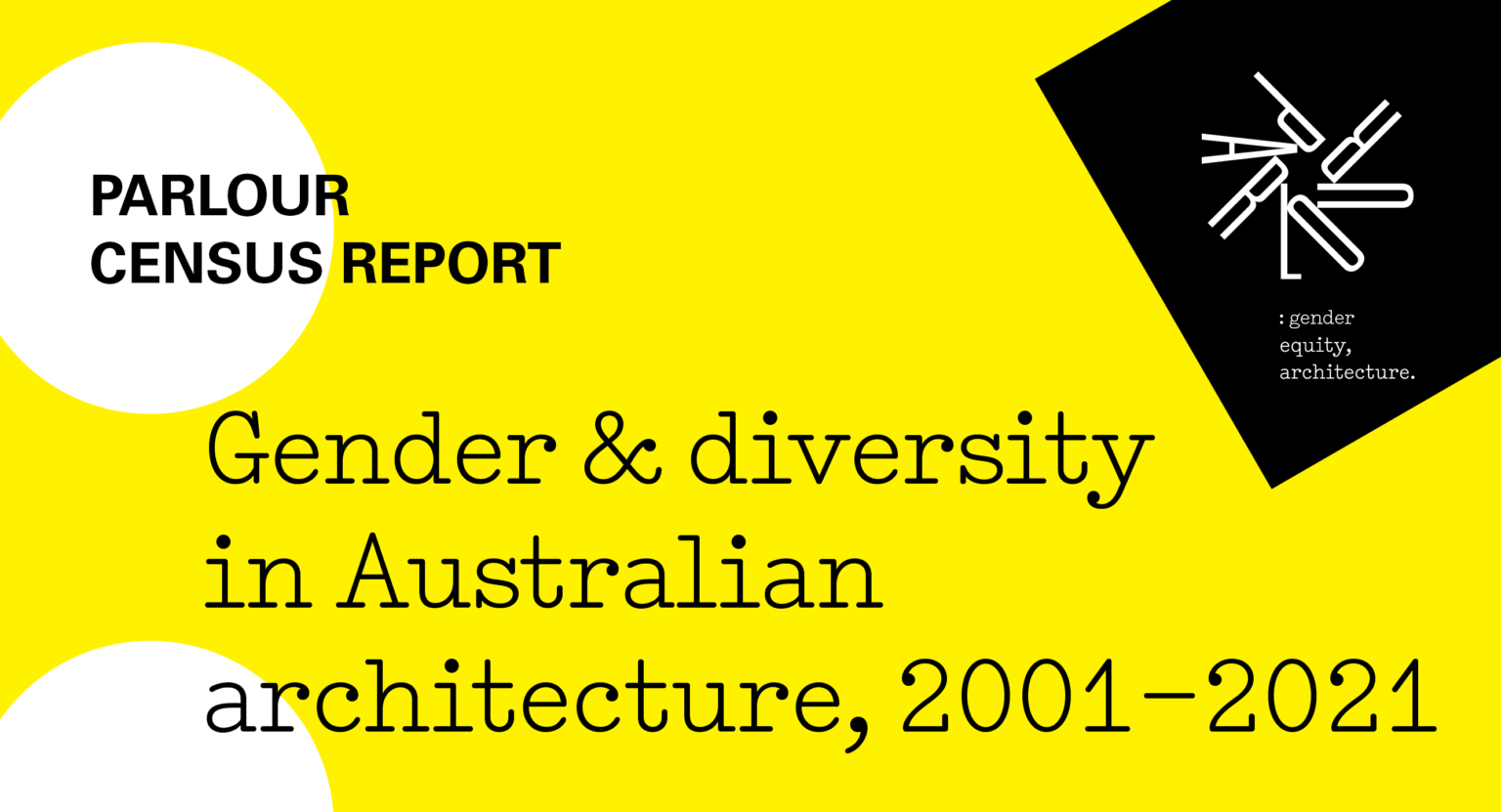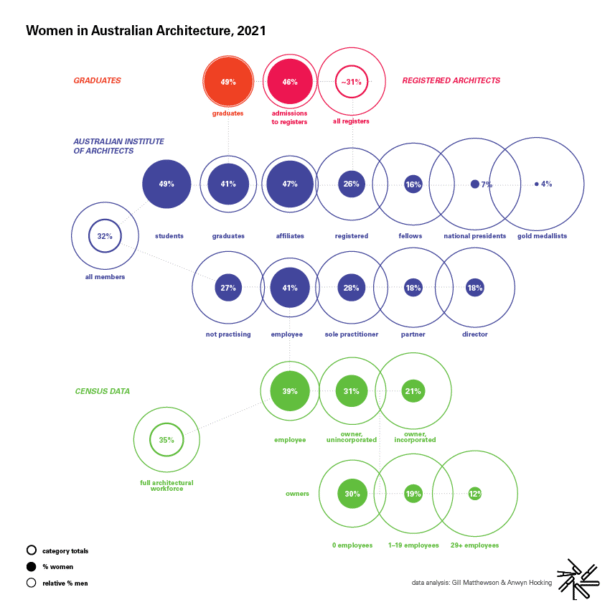Numbers matter! We hope you find the Parlour Census Report 2001–2021: Gender & diversity in Australian architecture thought-provoking and useful. We trust you will activate this knowledge in your own context as we work together to improve equity for all.

The latest Parlour Census Report tracks 20 years of progress – some fast, some slow. It captures some remarkable positive change and identifies key issues that continue to impede career progression. The report includes new material about the gendered impact of parenting (extreme) and new data about business ownership in relation to practice size (sobering). Importantly, the report takes an intersectional approach and investigates the pay gap in terms of cultural diversity and gender (devastating).
The Census is an immensely valuable source of information about the architectural workforce. It records changes over time and reveals shifting patterns of participation. The 2021 analysis shows that, although substantial progress has been made, there is still continuing inequity in the profession.
The Parlour Census reports are a means to review the profession’s current state and to develop strategies for activation. They were developed by the Parlour research team – Gill Matthewson, Justine Clark and Anwyn Hocking – who spent many months of painstaking work unpacking, analysing and presenting the latest statistics.
We invite you to put this data into action in making a more equitable and robust profession. Download the full and summary reports today!
Abbreviated key findings
See the full reports for expanded key findings, full statistics and detailed analysis.

Data in Action – report launch
Watch the launch of the Parlour Census Report: Gender & diversity in Australian architecture, 2001–2021. This session begins with a presentation by Gill Matthewson and Anwyn Hocking, followed by a panel discussion with Sonia Sarangi, Kukame McPierzie, Amy Muir and Kathlyn Loseby, chaired by Naomi Stead.
Thanks
We acknowledge and thank the organisations that have come together to financially support this Census report – ArchiTeam, the Association of Consulting Architects, the Architects Accreditation and the Australian Institute of Architects.
We urge all organisations and institutions to publicly report their own data as part of the ongoing efforts to understand and improve our profession. Consistent, reliable, publicly accessible data helps us all.






















